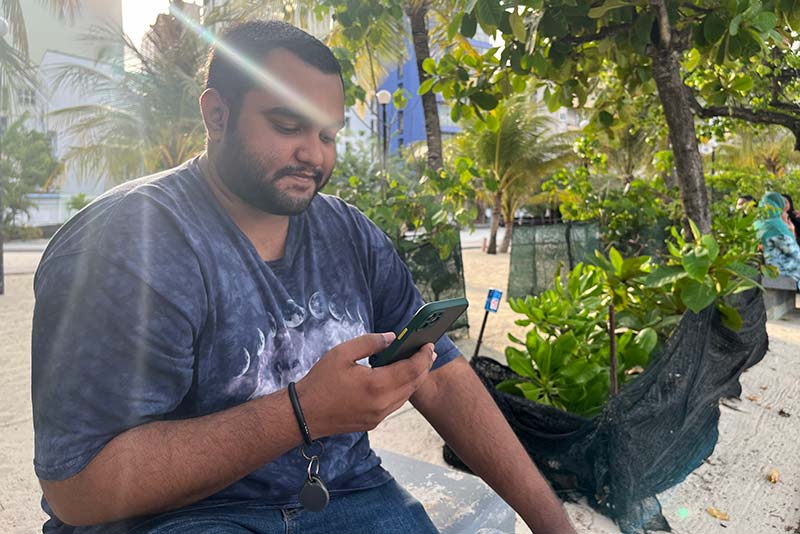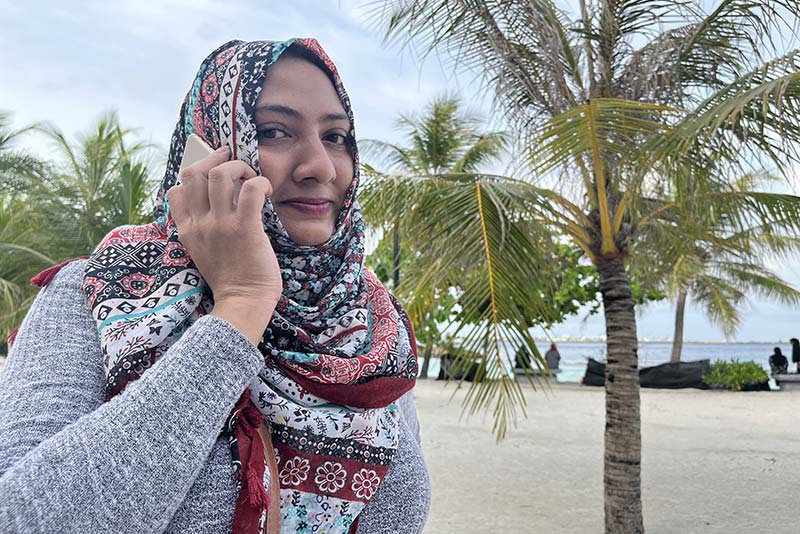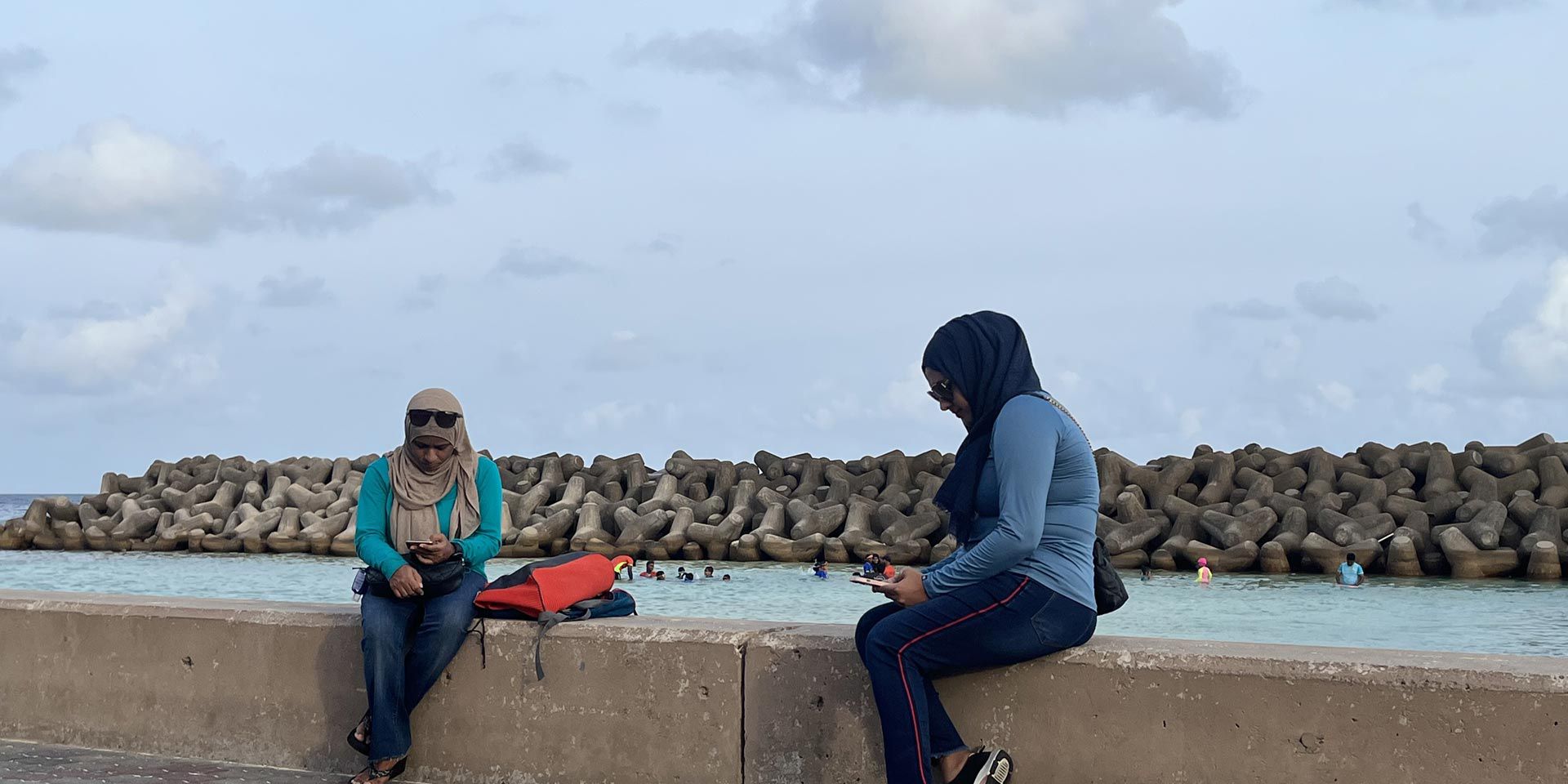By Savani Jayasooriya
The first directly connected and owned major international submarine cable system in the island nation is expected to improve connectivity whilst lowering costs for consumers.
The Maldives has a young population, and as you stroll along the paved streets of its capital Malé, the energy and vibrancy of the youth is evident – young Maldivians on their mobile phones is a common sight.
As a country with dispersed geography – with 1,200 scattered small islands and only 187 of them being inhabited – affordable connectivity such as mobile and internet is critical for communications as well as delivery of services in the Maldives. But, when the ocean makes up 99 percent of the country, connectivity undoubtedly becomes a challenge.
"Connectivity range in the Maldives needs to be improved, especially across the islands,” said Mohammad Yaeesh, who was just mingling with his phone while at the Artificial Beach, a man-made beach in Malé – no less enticing than the natural beaches across the country. “Mobile connectivity is also kind of expensive,” he added.
While Maldives has made substantial progress with mobile penetration and coverage – with fiber-to-the-home (FTTH) coverage of 87 percent and mobile market penetration of 125 percent, and the first in South Asia to launch 5G connectivity – there is a need to improve quality, reliability, and affordability. Prices for mobile services, especially for data, are higher than those of South Asian peers. This is mainly due to the higher costs in network rollout and international connectivity, a result of the challenges of providing a telecommunications network to a small population which is spread over a large geographic area.
International connectivity is a key element of Maldives’ digital infrastructure, but there is currently limited connectivity to major international cable systems. The existing network connects to Sri Lanka and India with reliance on other service providers for onward connectivity. Such dependency on intermediary networks is one of the reasons for the high bandwidth costs, lack of resilience and internet capacity bottlenecks. Whilst the demands on the country’s existing international digital infrastructure are exponentially increasing due to rising data usage.
But this is about to change.
Bridging the Digital Divide
An investment by IFC and the Asian Development Bank (ADB) in Dhivehi Raajjeyge Gulhun PLC (Dhiraagu), the largest telecommunications and digital service provider in the country, for a new state-of-the-art submarine cable system is set to be a game changer for the island nation.
The move comes after the two organizations banded together mid last year to providing financing to support Dhiraagu's working capital and capital investment program to enhance internet experience, including investments in 5G services and high-speed fibre broadband to more islands.

Mohammad Yaeesh browsing his mobile phone at the
Artificial Bean in Malé. Photo: Savani Jayasooriya / IFC.
Now with another round of funding, including $19.1 million from IFC, Dhiraagu will be able to connect to the global superhighway submarine cable system, helping strengthen international connectivity, improve efficiency of services and boost digital services across the country. The overall IFC investment of $35 million in Dhiraagu will be the Maldives’ first directly connected and owned major international submarine cable system.
The investment will be an important step towards helping Dhiraagu add to its existing submarine cable systems, enabling the company to be part of the South-East Asia-Middle East-West Europe (SMW6) submarine cable consortium – and importantly, making Maldives a global digital hub. With FTTH broadband reach covering 87 percent of national households, Dhiraagu has an urgent need to upgrade its network capacity to meet the future needs of customers throughout the country.
“With the Maldives’ small size and dispersed population, the digital economy is a top priority for the country to diversify its key economic drivers of growth,” said Hector Gomez Ang, IFC's Regional Director for South Asia. “While robust digital infrastructure can help integrate technologies into sectors, including tourism and trade, among others, it also creates new jobs for people, driving economic growth.”
Improving access to affordable, high-quality broadband connectivity would enable the digital delivery of services to public institutions, businesses, and households. IFC’s investment would enable more remote work as well as digital delivery of healthcare and education services across atolls, helping Maldivians to be more resilient in the face of adverse external shocks.
It is also an investment well placed within IFC’s strategy for the Maldives. IFC’s strategy for FY21-25 is focused on addressing the country’s key development gaps and supporting sustainable growth –centered around three strategic priorities: connectivity, sustainability, and inclusion.

IFC investment will enable Dhiraagu to be part of the SMW6 submarine cable
consortium and roll out the country's first directly connected and owned
international submarine cable system. Photo: Savani Jayasooriya / IFC.
According to World Bank data, in 2021, the Maldivian labor force consisted of about 43 percent women (15 years and above), surpassing its South Asian peers by about 23 percent. Improving digital connectivity in the atolls means more people will have access to remote work—potentially boosting the number of women in the workforce. A majority of Maldivian women are traditionally involved in the informal sector and closing the gender gap forms a key part of the partnership with Dhiraagu, as they work toward adopting a stronger gender lens within their operations.
Strengthening digital infrastructure and internet services in Maldives is a national priority – as highlighted in the government’s National
Resilience and Recovery Plan 2019-2023.
“Digital infrastructure underpins every aspect of society and the economy,” stated Ismail Rasheed, CEO & MD of Dhiraagu. “Strengthening the digital capacity enables inclusive growth, economic stability and improved quality of life for all citizens, including the most vulnerable.”
With the Maldivian economy projected to grow by 12.4 percent and 8.1 percent in 2022 and 2023 respectively, buoyed by a strong rebound in tourism, the country is moving toward a period of inclusive growth. Digitalization plays a significant role in sustaining this momentum – with a promise to create new and better opportunities for Maldivians across the islands.
Published in March 2023
